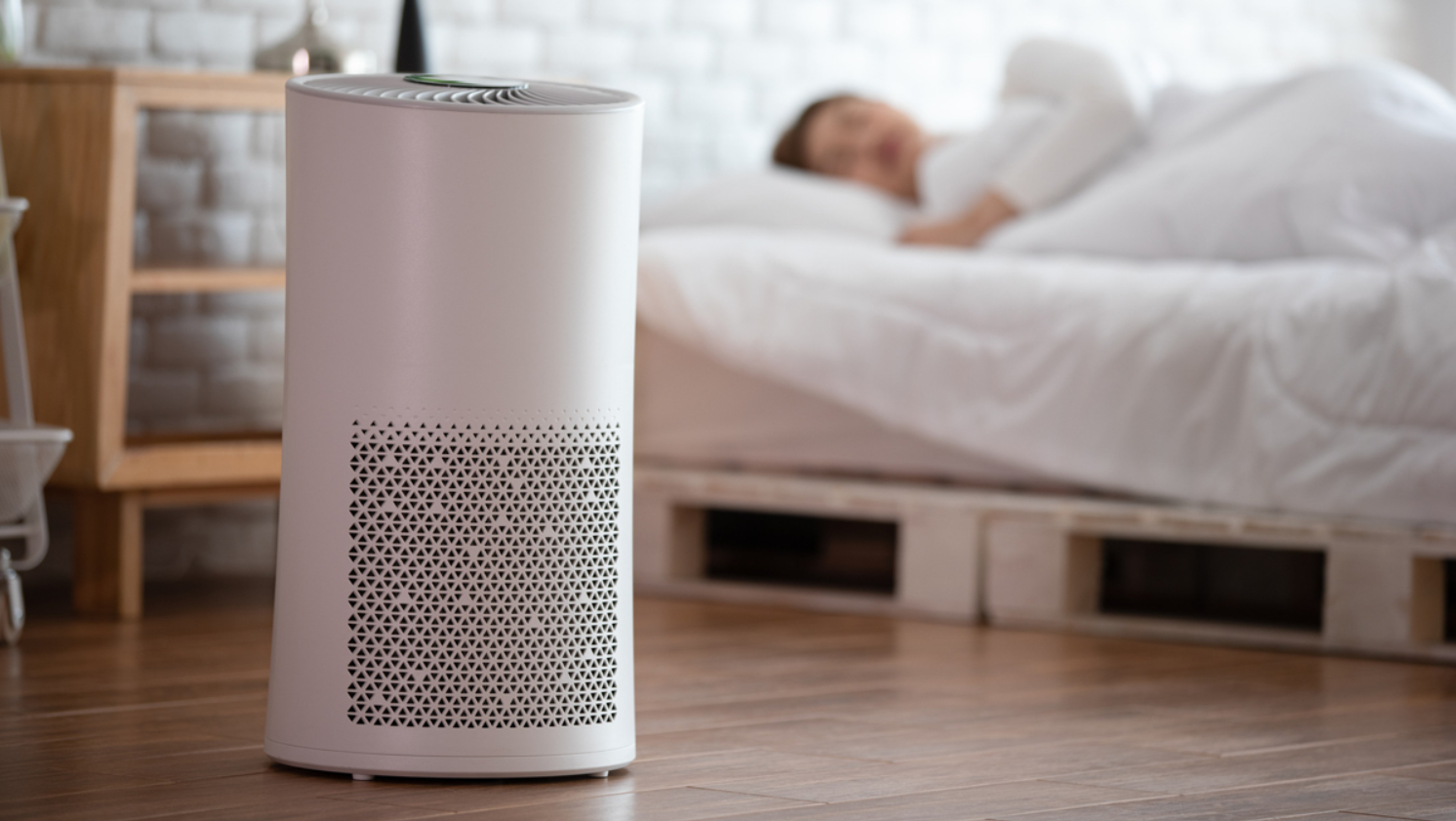While much attention is rightly given to the quality of the air we breathe outdoors, the air inside our homes and workplaces—where we spend the majority of our time—often escapes scrutiny. Yet, indoor air quality is a critical factor in our overall health and well-being. Common household activities like cooking, cleaning, or even just the act of decorating can introduce pollutants that linger unseen, with potential impacts ranging from minor discomforts to serious health issues.
Indoor environments can harbor a mix of pollutants including dust mites, pollen, mould, and harmful gases like radon and formaldehyde, which can come from everyday items such as furniture, appliances, and building materials. The stakes are high: Poor indoor air quality has been linked to respiratory conditions, long-term cardiovascular diseases, and even cognitive impairments.
Recognizing and addressing the quality of the air inside is not just about removing irritants; it's about creating healthier, more vibrant living spaces. In this article, we explore eight effective methods to purify your indoor environment, ensuring that the air you breathe indoors is clean, fresh, and conducive to your health and happiness. Follow along as we delve into practical strategies that can transform your indoor spaces into sanctuaries of clean air.
Indoor Air Pollution Risks
Breathing Issues
Do you get that annoying feeling like your nose is playing a prank on you, making you cough or feel icky indoors? The body's defence against colds and the flu may be negatively impacted by stuffy air. This could lead to a higher frequency of illness. Furthermore, the environment might worsen any existing breathing issues you may have.
Sick Building Syndrome

Experiencing headaches, tearful eyes, exhaustion, or difficulty focusing often? These are quite typical symptoms that might occur for a variety of reasons, but the sick building syndrome might be the culprit. Try stepping outside the building to check if you're dealing with this condition. If you start feeling better out there, then it’s time to think about the place’s indoor air quality.
Cancer
Continuous exposure to some airborne particles increases the risk of developing cancer. Radon and formaldehyde are two particularly concerning substances that can cause this disease. Radon is an invisible gas that rises from the Earth. Meanwhile, formaldehyde is an odourless gas often found in common appliances like gas stoves.
Low-quality air can cause cancer depending on several factors, including how much of it is there, how long you are exposed to it, and how your body responds.
Heart Disease
When we discuss heart problems, we typically include factors like diet, exercise, and family history. Why shouldn't we? These factors directly impact heart health.
But did you realise there may be air issues within the building? It can cause illness not only in your lungs but also in your heart. How?
Inflammation is how your body reacts to certain little substances and chemicals in the air. Your blood vessels may become damaged by this inflammation, narrowing and clogging them up.
It is difficult for blood, which delivers oxygen, to reach your heart through narrow channels. This raises the danger of heart attacks and strokes. People who already have heart problems are more likely to suffer.
Reduced Mental Capabilities
Have you ever been in a freshly painted room and felt lightheaded or queasy afterwards? Studies show it can also make you forgetful and even decline cognitively. Imagine there is a cloud over your brain every time you try to think. Concentrating, memorising, and making wise decisions become more difficult.
Improve Indoor Air Quality With These 8 Methods
Ensure the safety of occupants from potential hazards. Protect both property and health by following these eight essential steps.
#1. Embrace Fresh Air
Promoting fresh air flow from the outside is one efficient technique to ensure optimal indoor air quality, which is crucial. Keep windows and doors open to improve outside air circulation within enclosed spaces.
By doing so, substances are reduced and replaced with healthier air. Try to get brief bursts of air circulation throughout the day, especially after cleaning or cooking. Consider using the fan setting on the heating and cooling system to circulate air inside if the outside weather or air quality is bad.
#2. Embrace the Power of Plants
Snake and spider plants are excellent for purifying the indoor air. They naturally filter out pollutants while emitting oxygen, making them effective cleaners. Adding green plants to the space keeps it fresh and enhances its ambience and aesthetic appeal.
#3. Always Change the Air Filters

Get in HEPA-certified air filters designed to trap numerous air pollutants like dust, allergens, bacteria, and pet hair. Ensuring the efficiency of the air filters needs routine cleaning or replacement.
When selecting an air filter, the number of residents and the area's air quality should be considered. Those who have pets or allergies might want to use a higher-grade filter.
#4. Clean Regularly
Keeping the building's atmosphere healthy is essential, even though cleaning might not seem most enjoyable. Dust mites eat dead skin flakes and produce tiny debris that can irritate the nose, create congestion, and even trigger wheezes. Cleaning regularly might help you breathe easier by keeping dust mites out of the area. Attend to the carpets, windows, and other nearby regions.
Additionally, consider incorporating a saunas into your home wellness routine. Saunas can contribute to better indoor air quality by promoting sweating, which helps to expel toxins from the body. The heat and steam from saunas can also help to open airways, improve respiratory function, and create a cleaner, more breathable environment. Regular sauna use can enhance overall wellness by complementing your efforts to maintain a clean and healthy indoor atmosphere.
#5. Test for Radon
Colourless radon gas is one of the causes of indoor pollution. Think about doing a radon test on the property and, if required, applying the right mitigation measures. It's advisable to ask a professional or specialist to guarantee accurate testing and appropriate strategies.
#6. Properly Store Household Chemical
If paints, solvents, and other chemicals are lying around, it's time to keep them away for a cleaner-looking space and health reasons.
They must be stored in well-sealed containers and kept out of household areas. Ensure they will be kept in rooms with good ventilation or locations set aside specifically for storing hazardous items. Doing so can prevent harmful gas from lingering around the property.
#7. Avoid Burning
Burning candles, incense, or wood inside can create smoke. This smoke can lower the oxygen level in the air and increase the fire risk. To keep safe, it's best to avoid burning these things indoors. Instead, try using alternatives that don't produce smoke, like electric candles or diffusers. That way, you can still enjoy a cosy atmosphere without worrying about the dangers of smoke and fire. This is especially true even if you have weather-sealed vents like an SVG-SL smoke vent.
#8. Remove Shoes at the Door
You can make a big difference in keeping the area safe and healthy by doing the simple practice of taking off your shoes before entering. This prevents the entry of dirt and perhaps dangerous pollutants.
To Sum Up
The significance of maintaining high-quality indoor air cannot be overstated, as it is a vital aspect of ensuring a healthy and vibrant living environment. Throughout this article, we have explored various strategies that are not only practical but essential for minimizing the health risks associated with poor indoor air quality. These methods, ranging from optimizing natural ventilation to the judicious use of air-purifying plants and advanced filtration systems, are straightforward yet powerful tools in the quest for cleaner air.
Implementing these practices can lead to immediate benefits, including reduced allergy symptoms, fewer respiratory issues, and an overall enhancement in day-to-day well-being. Beyond individual health, improved air quality in our living spaces can contribute to cognitive function, emotional stability, and long-term health outcomes.
As we continue to learn about the complex interactions between our environments and our health, it becomes clear that taking proactive steps to enhance indoor air quality is not just a matter of comfort—it's a fundamental component of living well. By embracing these eight methods, you empower yourself to create a sanctuary that supports not only your health but also the well-being of everyone who shares your space. Remember, clean air is not a luxury—it is a cornerstone of healthy living.
We encourage you to start today: assess your current indoor air quality, implement the changes suggested, and enjoy the profound impact that clean air has on your life. By paying attention to the air you breathe indoors, you're taking an important step towards a healthier, more fulfilling future.

